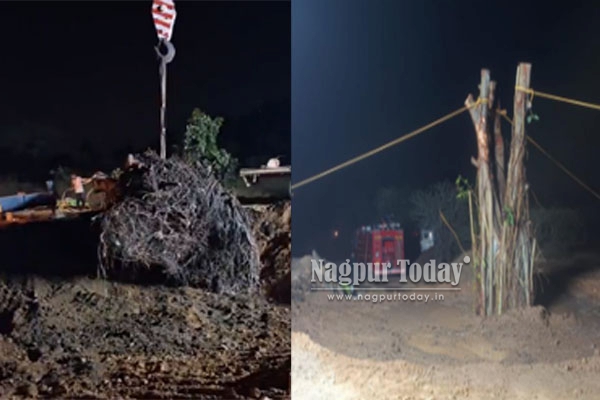
Nagpur’s 188-year-old banyan tree from Thakkargram has been reduced to a bare stump and shifted to Gorewada under the label of “transplantation.” The real tragedy, however, may not be the brutal mutilation of the tree—but the way prominent media outlets celebrated the act as a “historic success” while the process was still incomplete.
Field evidence shows a trunk with no branches, no roots, no foliage, no aerial roots—nothing that scientifically qualifies as a transplant. Yet newspapers rushed to print glowing reports within hours, without photographs, without on-ground verification, and without expert voices.
This raises an uncomfortable but necessary question:
Was this journalism, or was this choreography?
A Coordinated Narrative-or a Paid One?
The uniform tone across multiple newspapers, including English dailies, is striking. Each pushed nearly identical lines:
“Historic moment.”
“Successful transplantation.”
“For the first time in Nagpur…”
All this when the machinery belts had reportedly broken multiple times, the tree fell twice, and the shifting process was still ongoing.
The coverage resembles not reporting but PR automation, as if the press release simply became the news.
If this was deliberate narrative-management, it comes at a convenient time. Environmental destruction—especially involving old trees—has previously attracted strict judicial attention. Journalists in the city privately admit that government agencies often fear:
- A suo motu PIL by the High Court
- A contempt petition from environmental groups
- Judicial monitoring of future development projects
And courts do have a history of stepping in.
Courts Have Previously Intervened in Tree-Cutting Cases
Across India, courts have taken suo motu action on environmental destruction:
• Bombay High Court took suo motu cognizance in 2019 when large-scale tree cutting began at Aarey Colony for the Metro car shed.
• Madras High Court initiated suo motu proceedings on illegal tree felling in reserve forest areas.
• Supreme Court intervened suo motu in multiple cases involving river pollution, forest destruction, and illegal construction in eco-sensitive zones.
When courts act suo motu, governments face immediate scrutiny—affidavits, site inspections, expert committees, and public hearings.
A sanitised media narrative can help avoid exactly that.
Silencing Reality with Headlines
The most troubling aspect is that even seasoned reporters—those who know the ethics of verification—chose to repeat the official version word-for-word. Younger digital reporters followed the same template, calling the event “historic” without a single confirmed visual.
Not one report questioned:
• Why were all branches chopped?
• Why were aerial roots destroyed?
• Why was only a trunk shifted?
• Is this even scientifically considered “transplantation”?
• Why were no environmental experts quoted?
• Why did no reporter independently visit Gorewada?
When journalism becomes stenography, the public becomes blind.
A 188-Year-Old Life Reduced to a Prop
In reality, the tree now stands as a wooden stump in Gorewada—naked, mutilated, and stripped of the ecosystem it once supported. Whether it survives is uncertain; it will take months for any sign of new growth, if growth even happens.
Calling this a “successful” transplant today is like calling a patient cured while he is still on the operating table.
The Real Loss Isn’t Just a Tree—It’s Accountability
Journalism is meant to protect the public from the powerful.
Instead, it appears some newsrooms protected the powerful from the public.
If the coverage was intentionally softened, then the intent is clear:
Prevent outrage, prevent legal challenge, and prevent the possibility of judicial intervention.
This isn’t just a failure of reporting—it’s a failure of duty.
When facts are replaced with press releases, the environment becomes collateral damage, and public trust becomes expendable.
Nagpur Deserves the Truth, Not Manufactured Headlines
What happened to the 188-year-old banyan tree is not only an environmental wound—it is a reminder that journalism must return to its basic responsibility: verify, question, and expose, not copy-paste.
The story is not over.
The tree may survive—or it may die.
But the credibility of the media won’t grow back as easily.
View this post on Instagram















